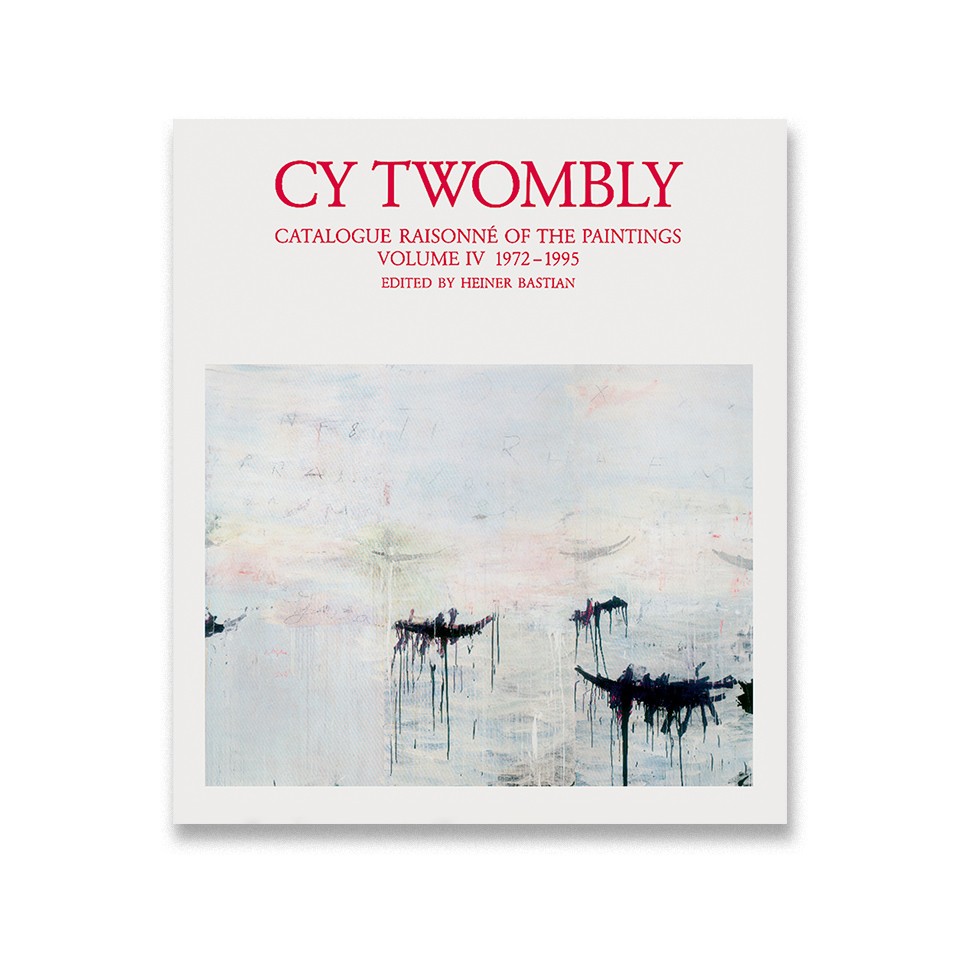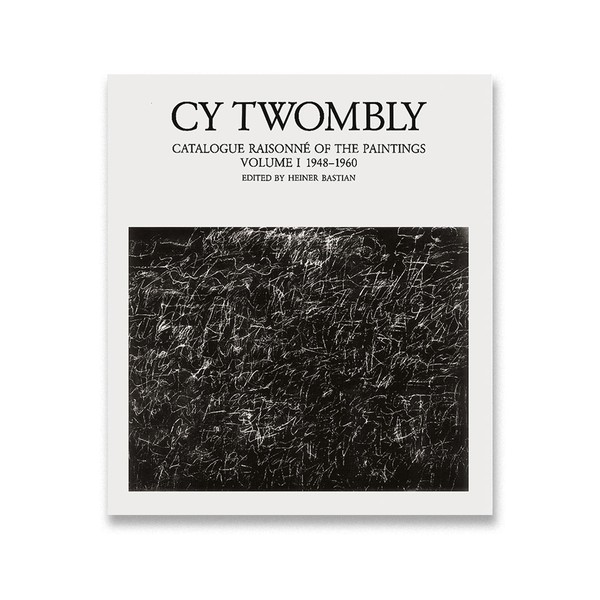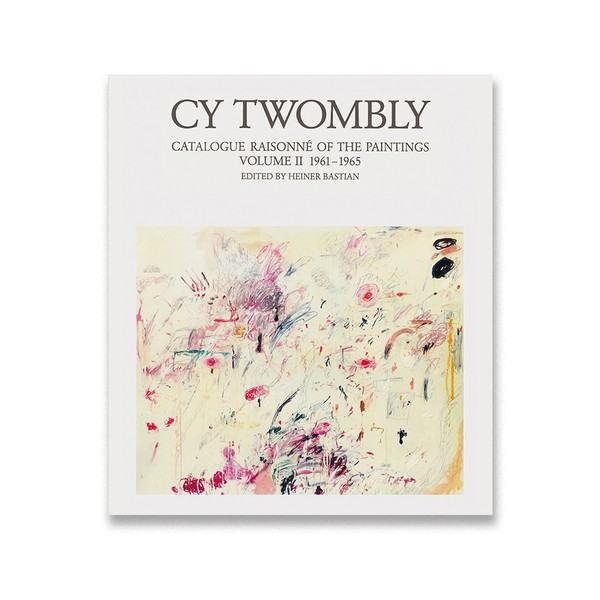Cy Twombly
Catalogue Raisonné of the Paintings
Volume IV, 1972–1995

Cy Twombly Catalogue Raisonné of the Paintings Volume IV ranges from 1972 to 1995 and includes several of the artist’s largest paintings and cycles. The volume was conceived as the last in the first set of catalogues raisonnés of paintings, covering artworks produced until the date of publication; as a result, Heiner Bastian’s introductory essay has a summative tone and retrospective orientation. Drawing connections to earlier moments in Twombly’s practice throughout, Bastian argues that the artist produces “notions of time and space within an aesthetic programmatic unity” (25). He focuses heavily on 50 Days at Iliam (1978) and the Homeric content in Twombly’s oeuvre at large, though he also discusses the “poetry of nature” (30) in Goethe in Italy (1978) and Analysis of the Rose as Sentimental Despair (1985) as “pure emotion, configurations of colour, flaring or translucently pale” (31). There is also a briefer discussion of Venere Sopra Gaeta (1988) in connection to Albrecht Dürer’s Nemesis (1499–1501).
Twombly’s pastoral idylls such as Thyrsis (1977), produced in response to the countryside of Bassano in Teverina in the 1970s, appear here. The volume will also be vital to researchers focused on Twombly’s investment in Greek antiquity and Platonic moral education, given the inclusion of a series of works responding to Plato’s Phaedrus, Symposium, and Republic as well as Homer’s Iliad. The most notable engagement with Homer in the works catalogued here is Twombly’s monumental cycle Fifty Days at Iliam. In addition to sustained, substantive engagement with classical material, Twombly also attends to classical reception in this period with his Goethe in Italy. In a similar vein to the “landscape” recorded in Goethe in Italy, Twombly’s green paintings—which he playfully referred to as “hand painted,” referencing his having painted with his hands directly on the canvas—will be of interest to researchers focused on either representations of space in Twombly’s work or his techniques of production. Other significant works catalogued in this volume include Orpheus (1979), early Bacchus works, Hero and Leandro (1981–84), Wilder Shores of Love (1985), and Analysis of the Rose as Sentimental Despair. The volume includes several works of interest for scholars researching Twombly’s floral motifs, including Summer Madness (1985), and is crucial for those interested in his boat motif—e.g., Untitled (1993). The volume also includes Twombly’s Quattro Stagioni (1993–5) and his monumental Say Goodbye, Catullus, to the Shores of Asia Minor (1993), an artwork that integrates many of the aforementioned thematic concerns and motifs.
There is extensive literature related to the artworks catalogued in this volume. Recommended further reading includes Cycles and Seasons, ed. Nicholas Serota (2008), for more on Quattro Stagioni; Mary Jacobus, Reading Cy Twombly: Poetry in Paint (2016), for more on the pastoral idylls, Goethe, Orpheus, and Hero and Leander; Fifty Days at Iliam, ed. Carlos Basualdo (2018), for more on the eponymous cycle; Thierry Greub, Inscriptions (2022), for more on literary references; and Demosthenes Davvetas, “The Erography of Cy Twombly” (1989) for more on Venere Sopra Gaeta, Wilder Shores of Love, and other related works.
(Publication description by Jamie Danis)
Cy Twombly Catalogue Raisonné of the Paintings Volume IV 1972–1995. Edited by Heiner Bastian. Munich: Schirmer/Mosel, 1995. Fully illustrated. English/German bilingual edition.



